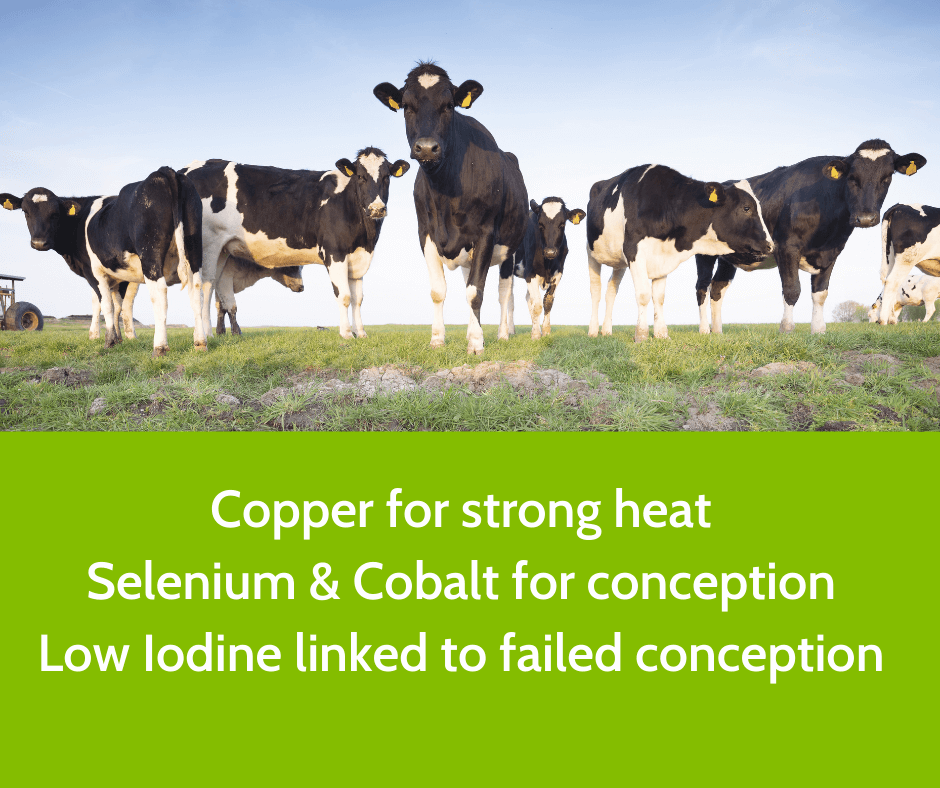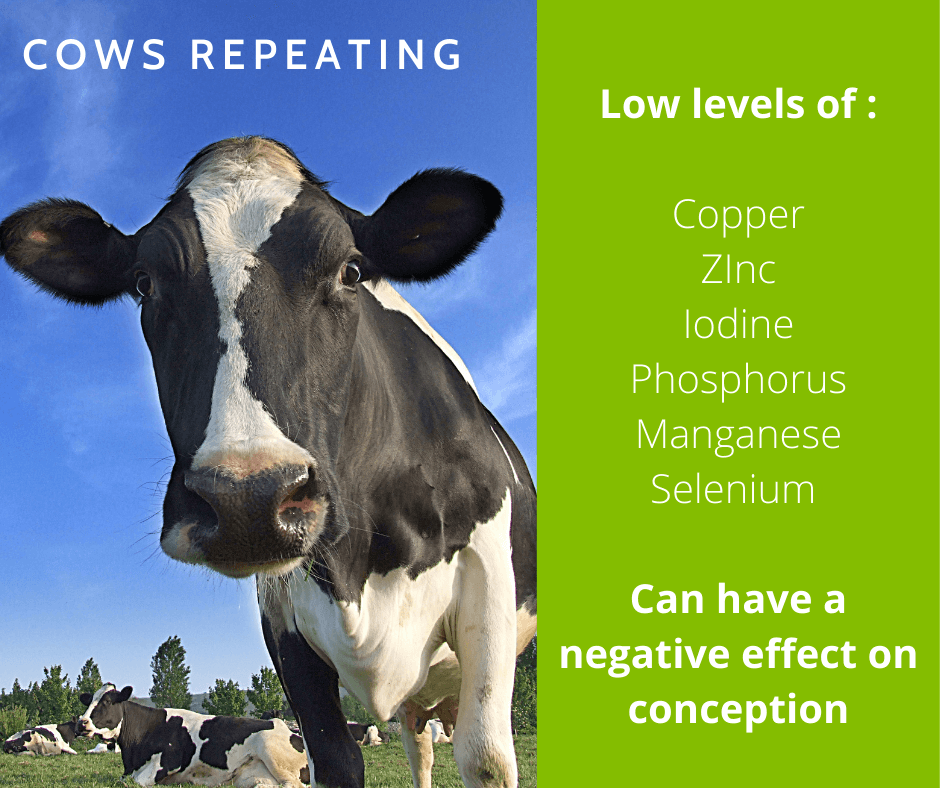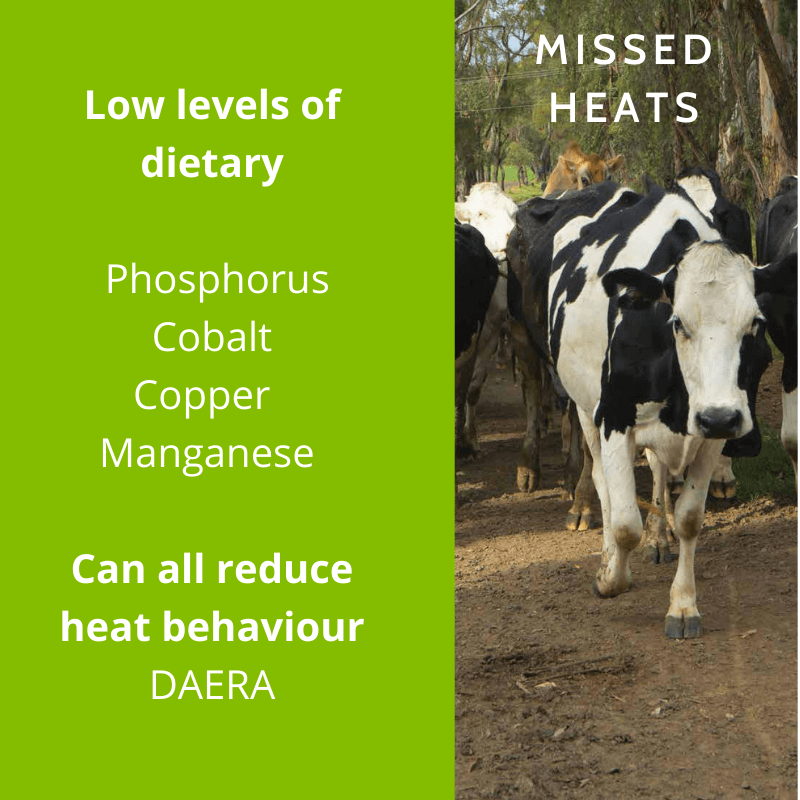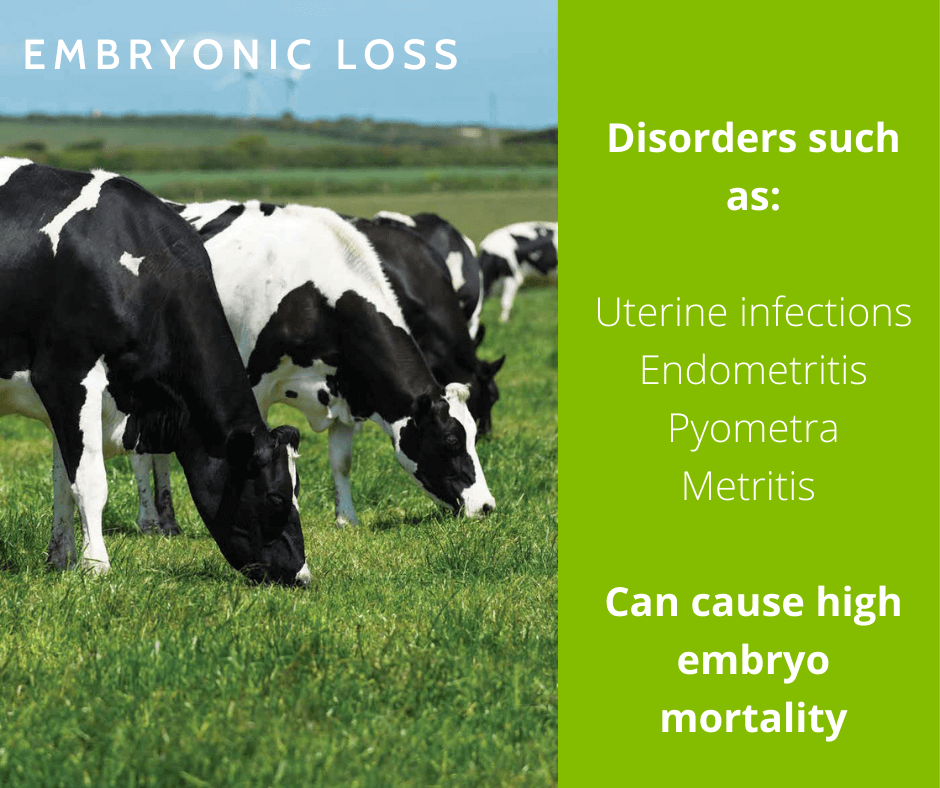
Fertility is one of the biggest areas that can affect efficiency on farm.
According to Agriculture and Horticulture Development Board (AHDB) Fertility is one of the major factors affecting the efficiency of any dairy herd. It can account for one of the major costs of production and also represent an area where significant improvements can be made.
According to Teagasc dairy farmers should be aiming for reproductive targets in seasonal calving dairy herds to include:
.png)
To achieve these reproductive targets, we need to have the correct mineral levels in our herd.

Taking the guesswork out of fertility.
If the cow is deficient in any mineral it won’t perform to its potential. Let’s look a little deeper into some of the factors affecting the fertility of a dairy herd.
Cows repeating.
This can be defined as a cow who is cycling normally, with no apparent issues, but has failed to conceive after at least 2 successive attempts. Taking specific care of nutrition during the dry, transition, and fresh phases to maintain optimum body condition score (BCS) is important.

Looking at a cow’s mineral status as it is crucial to determine if low levels of minerals are having an effect on fertility. Low levels of copper, zinc, iodine, phosphorus, manganese, selenium, etc can have negative effects on conceptions. It is vital to supplement cows with the appropriate minerals to ensure maximum conception rates and recommend using Fertility Magnesium Mineral and their High Phos Fertility mineral.
Missed Heats
A missed heat is when a cow does not come into heat as expected – also called sub-optimal fertility. This can pose a significant cost to the farm, impact calving intervals and lead to the loss of good animals. Cows should resume normal heats 30-40 days after calving, with the first heat normally being a silent heat. It is best practice to wait for a minimum of one cycle before attempting to put the cow in calf.

The basic vitamin and mineral needs for your cows are vital to not just their overall health, but also their reproductive health. Providing high-quality trace mineral and vitamin supplementation is research-proven to improve reproductive efficiency. According to DAERA low levels of dietary phosphorus, cobalt, copper, and manganese can all reduce heat behaviour, while high levels of molybdenum reduce copper availability causing the same effect. It is therefore important to ensure maintenance of the correct mineral and trace element balance.
To ensure strong heats in cows, it is vital to balance mineral requirements and feed an appropriate level of minerals. This will help ensure all cows are serviced on time and increase the chances of cows going in calf.
Embryonic Loss
Embryonic loss in cows or cows ‘not holding’ is the loss of pregnancy after conception. Loss of pregnancy is frustrating and can occur at various stages of gestation and for a variety of reasons. These losses clearly produce a negative impact on the reproductive and economic performances of dairy herds.
There are many causes of embryonic loss including poor egg quality, heat stress, inflammatory disease, reduced progesterone concentrations, and infectious diseases such as Neospora or IBR.

Disorders such as uterine infections, endometritis, pyometra, metritis etc. cause high embryo mortality. DAERA has discussed how Vitamin E deficiency has also been implicated in incidences of metritis and cystic ovaries in a study undertaken at CAFRE.
Feeding a suitable mineral blend is crucial to supporting conception and pregnancy for the cow. Any dietary issue that impacts on the cow and calf will also impact on profitability. It is therefore essential that all aspects of the cows’ health are considered and rectified so that optimal production is achieved.
© 2026 Farm Compare Ltd. All rights reserved| T&Cs | Privacy policy | Website by Reflex Studios

This website was developed with support from Priority 6 (LEADER) of the Northern Ireland Rural Development Programme 2014-2020 by the Department of Agriculture, Environment and Rural Affairs and the European Agricultural Fund for Rural Development: Europe investing in rural areas

